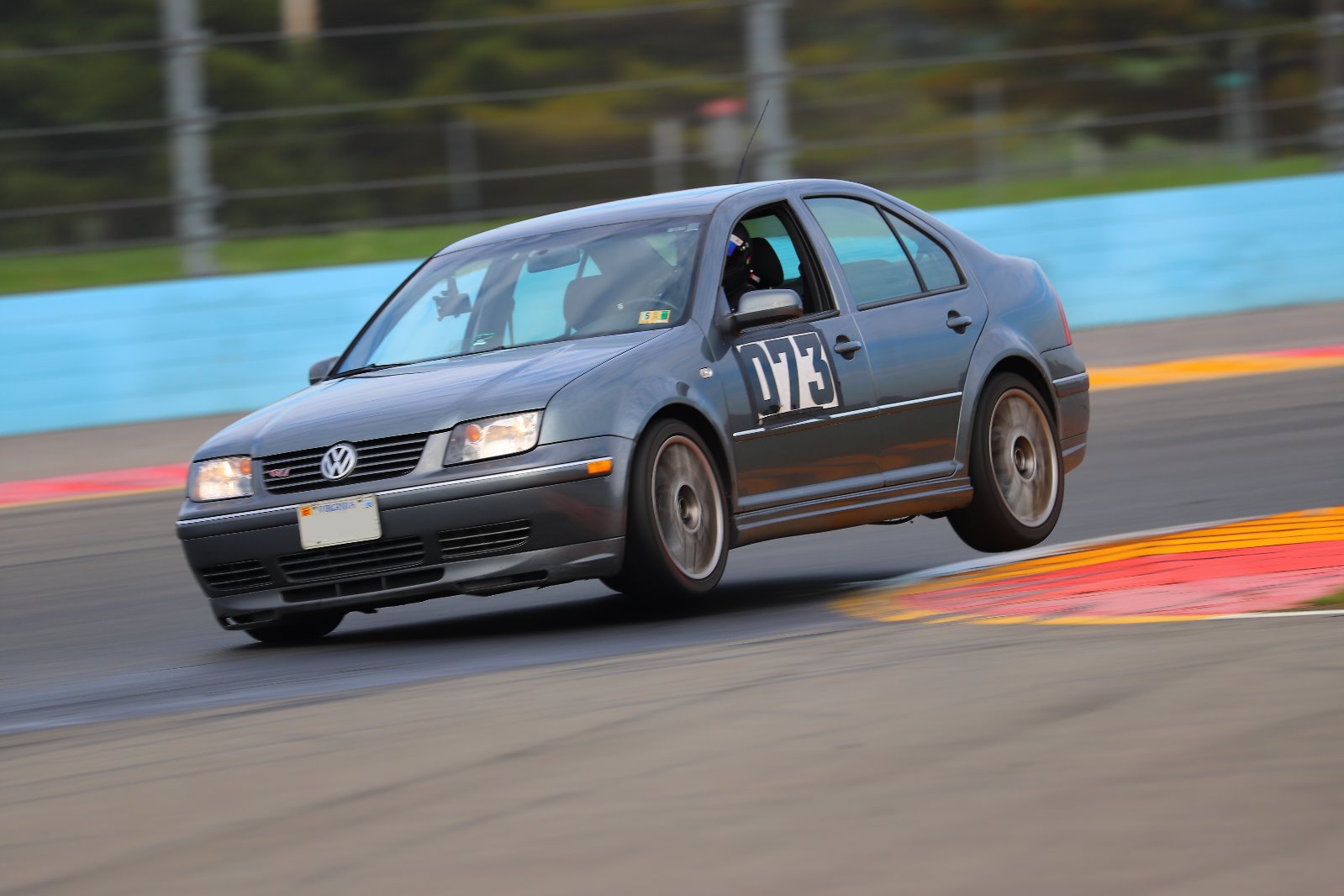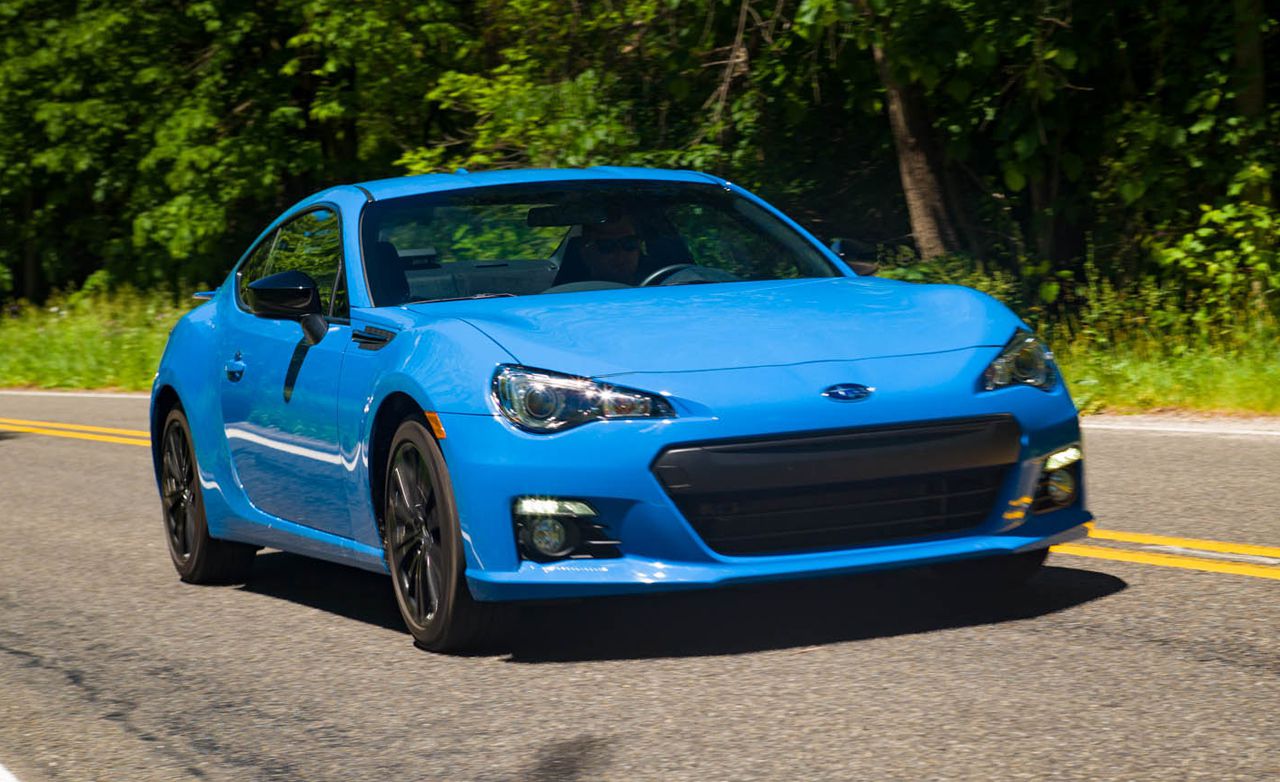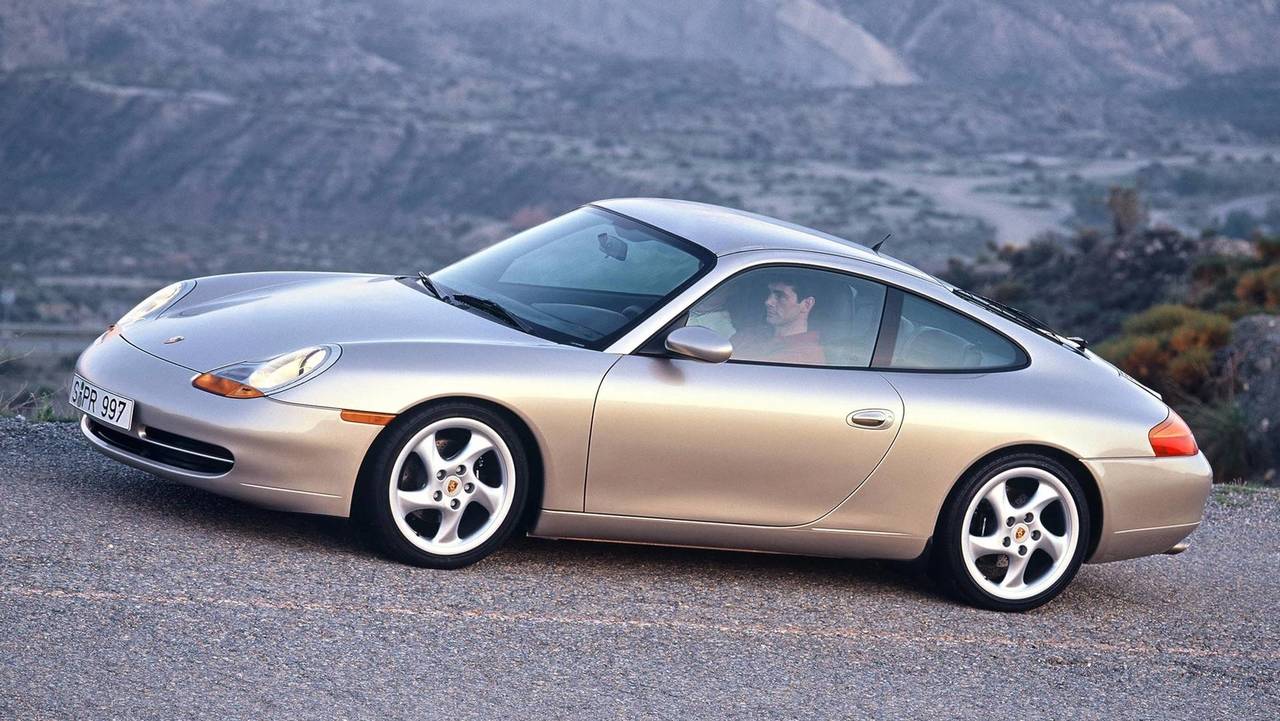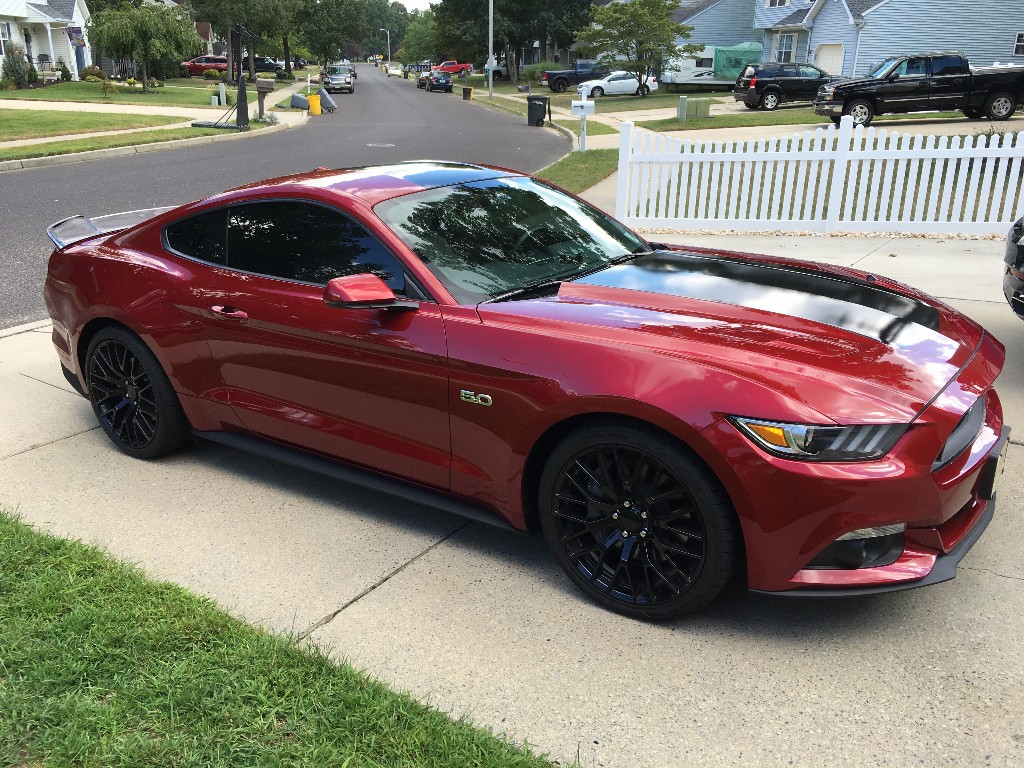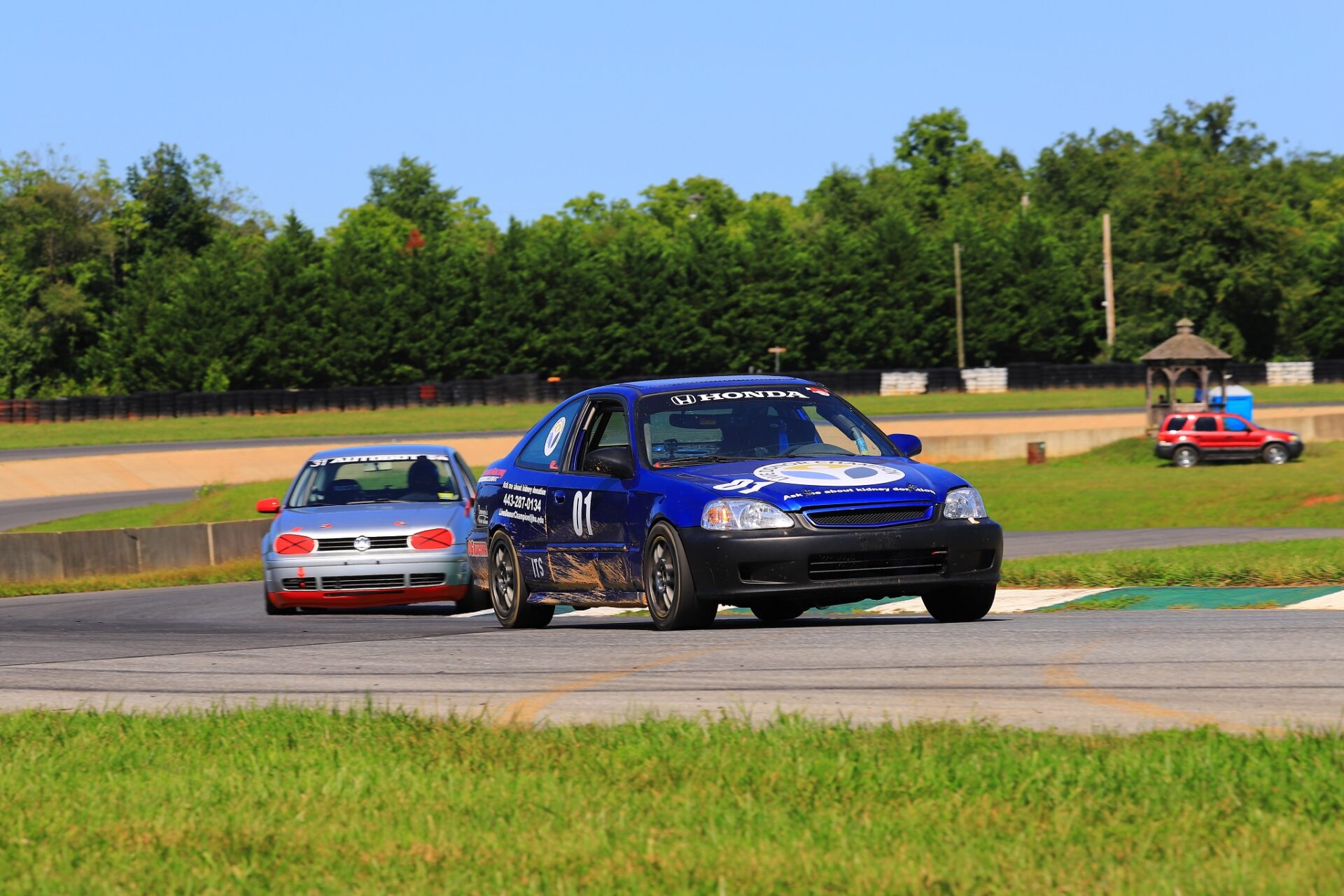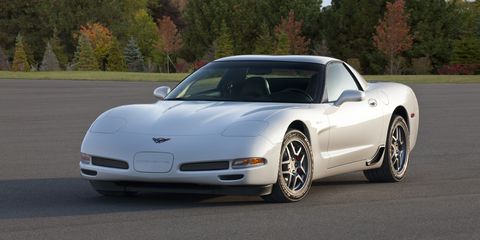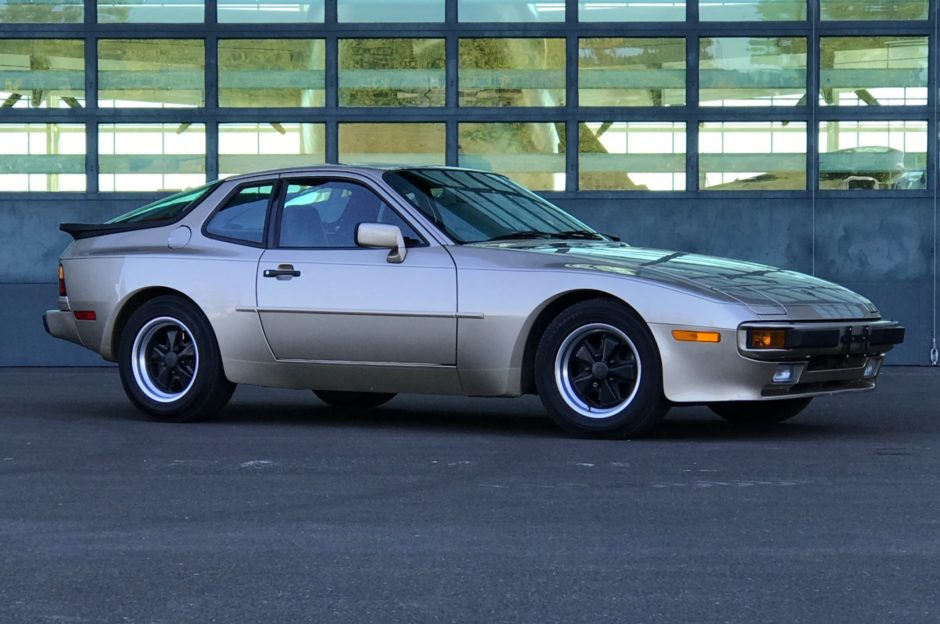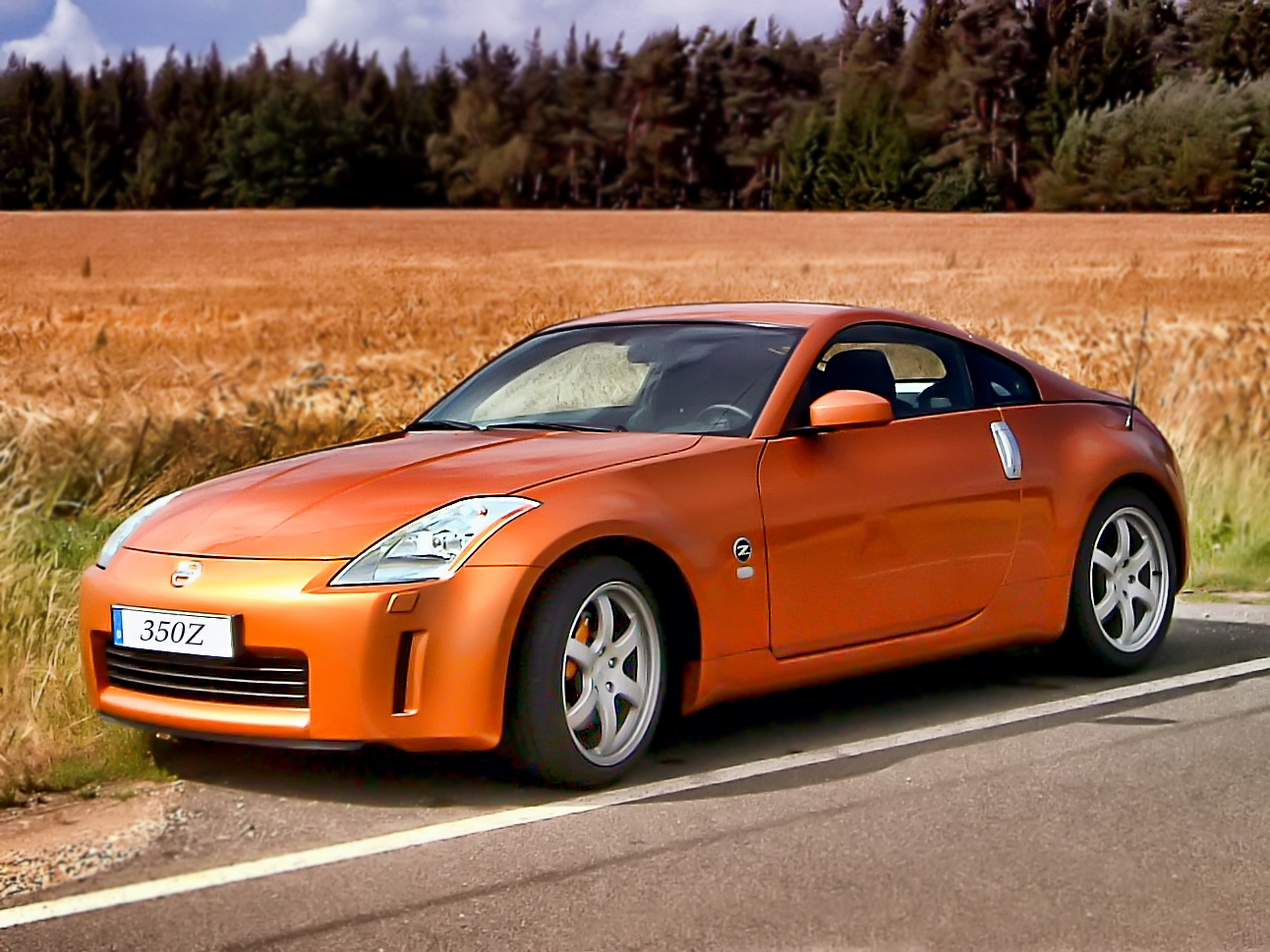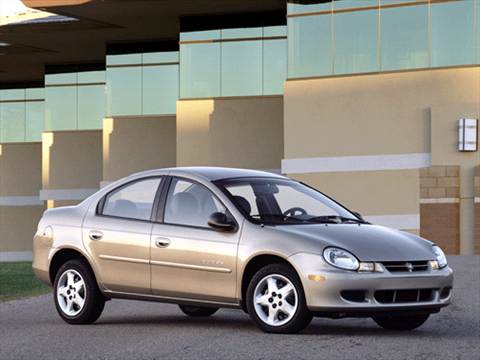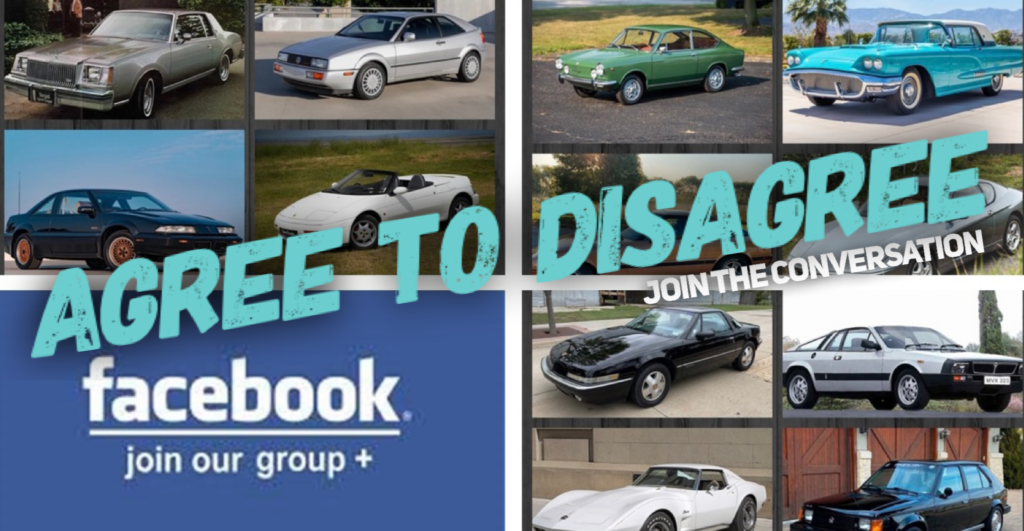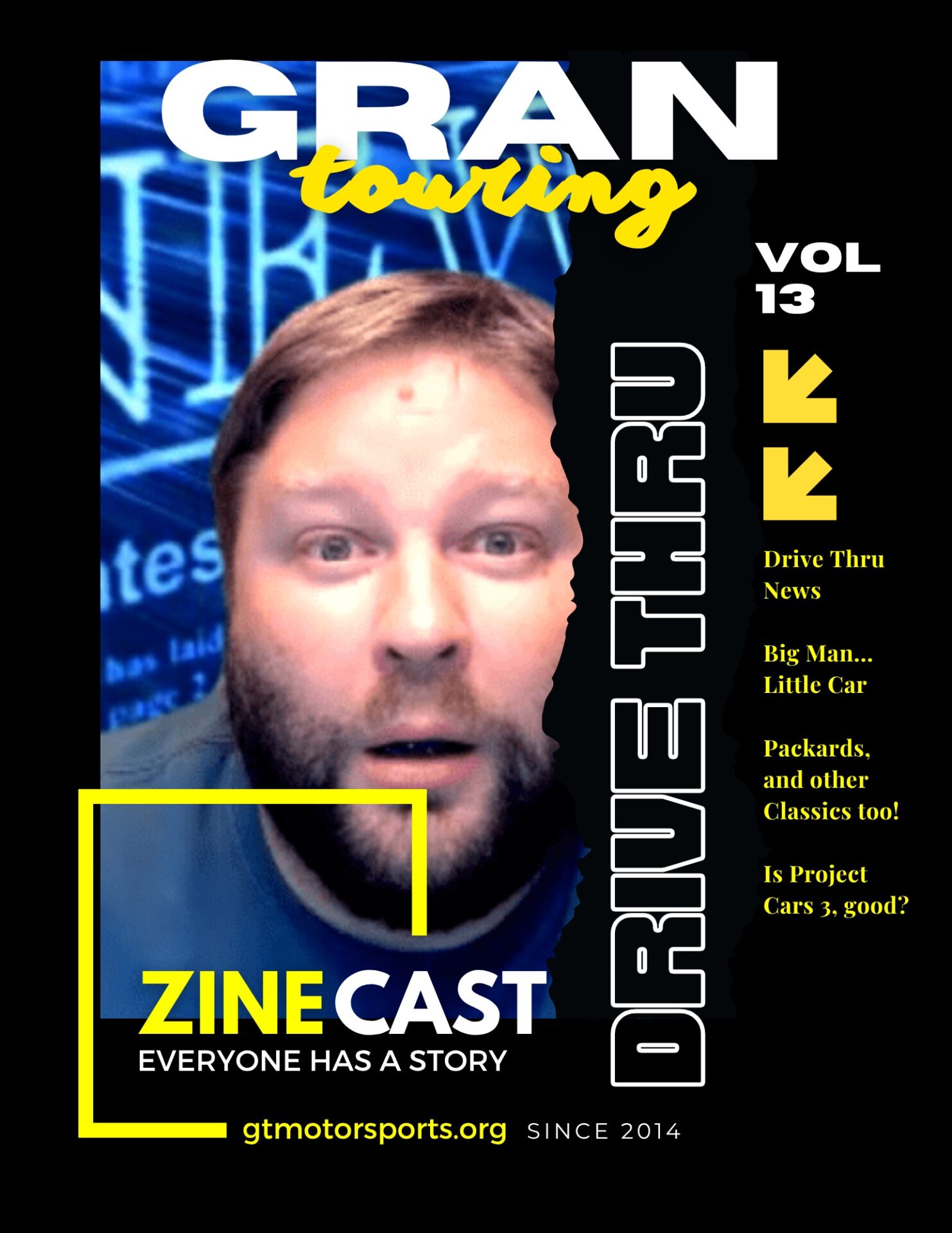Within the GTM community, the debate of which car should I buy? never seems to fully end. Whether it be: what should I buy as my first track car? my backup car? my new daily? … or I just want something different. The fury of this debate within our group will quiet from time-to-time, but during the slower months someone will bring it up … yet again … and the arguments resurrect themselves in full glory.
In this weeks episode of Break/Fix, we revisit “the one that started it all” … the original What Should I Buy? – and we attempt to answer the age old question specifically regarding Starter Cars!
Tune in everywhere you stream, download or listen!
 |  |  |
- Highlights
- Transcript
- Learn More
Highlights
Skip ahead if you must… Here’s the highlights from this episode you might be most interested in and their corresponding time stamps.
- 00:00 Introduction and Host Introductions
- 00:36 Debate on First Track Car
- 01:20 Top Tips for Buying a Sports Car
- 02:03 BMW E36: The Popular Choice
- 05:43 BMW E46: The Big Brother
- 08:50 Volkswagen Mark 4: The Budget Option
- 14:55 MINI Coopers: The Quirky Contender
- 18:11 BRZ and FRS: The Balanced Twins
- 21:48 Porsche 996: The Starter Porsche
- 25:01 Ford Mustang: The American Muscle
- 30:46 High Belt Line and Visibility Issues
- 31:37 Front-Wheel Drive Fun: Hondas and Acuras
- 35:15 Corvette C5: The Driver’s Car
- 39:10 The Iconic Mazda Miata
- 43:59 Honorable Mentions: Porsche 944 and Nissan 350Z
- 51:56 Final Thoughts and Recommendations
- 56:24 Conclusion and Contact Information
Transcript
Crew Chief Brad: [00:00:00] Our panel of break fix petrolheads are back for another rousing what should I buy debate. Using unique shopping criteria, they are challenged to find our first time collector the best vehicle that will make their friends go. Where’d you get that? Or what the hell is wrong with you? At the next cars and coffee
What’s going on everybody this is brad aka the triple six I know this is the first time you’re hearing that from me But that’s my nickname around the track in the paddock and gtm with me as always is my co host eric. Hey His nickname of course is monty quattro We’re coming at you with another episode here.
This today’s topic is what cars should I buy? Within the GTM community, the debate of which car should I buy never seems to fully end, whether it be what should I buy as my first track car, my backup car, my new daily, or I just want something different. The fury of this debate within our group will quiet from time to time, but during the slower months, someone will bring it up and the arguments resurrect themselves in full glory.[00:01:00]
Crew Chief Eric: You’re right, Brad. And granted, this question can be asked for various types of driving situations. I think we’re not really interested in talking about minivans, SUVs, and anything like that. We really want to focus on spirited driving, autocross, and track days. We’re going to focus on those guys that aren’t looking and shopping for their second and third track car.
They’re really looking for their first one. But before we start, here’s some top tips from various members to keep in mind when you’re shopping for a new quote unquote sports car.
Crew Chief Brad: So remember, Matt Y comes at us and he says, Never drive your heroes.
Crew Chief Eric: And this one from our illustrious leader, Brad. Look around the paddock and start with what you see.
Crew Chief Brad: Again, another gem from Matt Y. If you’re not okay with me putting a boot in the door of your car, Then you’ve selected the wrong car
Crew Chief Eric: and pearls of wisdom from Sam build versus buy, buy. So rather than rehash everything we’ve talked about on Slack for the 11 millionth time, what we’ve done is put together a list of kind of our top 10 [00:02:00] cars from the plethora of options that exist out there.
We’re going to go through them and talk about why they’re great starter track cars in no particular order, but we’re going to go ahead and kick off with a fan favorite, BMW or the E 36. and the M threes. So Brad, what do you think about those?
Crew Chief Brad: You see a lot of them around the paddock. I mean, they’re, they’re very popular.
I think they’re, they’re very cheap to get into. They perform pretty well compared to other cars that are out there, I guess, for the money. I’d say they’re not rare, but their setup is something that’s hard to find these days. It’s hard to find a rear wheel drive car with a manual transmission, which some people will argue is the ideal, you know, setup or attract.
weapon. I think that’s what one of the things that makes them very popular. The aftermarket form is really good. They’re a mainstay at the track. I mean, they’re very well balanced cars. They don’t drive typically like a rear wheel drive car, like say an American car where they’re, they’ve got tons of oversteer or anything like [00:03:00] that.
They’re very balanced. They, they handle really predictably almost like a front wheel drive would think they’re, they’re solid cars. Having never owned one is easy for me to say. Uh, since you have actually owned one before, let’s get your input on it.
Crew Chief Eric: Yeah. So I mentioned this in the, uh, the unaired pilot of our podcast, but you know, for me owning a BMW, it was like owning a boat, you know, the happiest days for me were the day I bought it.
second happiest day was the day I got rid of it. And everything in between was an absolute nightmare. Now, that being said, I bought the car because I was, I was working on something else and it was down at the time. And I was really curious. A lot of my friends have E36s and they love them. And they, they speak very highly of those cars and everything you said.
is 100 percent true. But what I came to realize though, to build a competitive E36, it becomes a very slippery slope. It’s 30 year old German technology, which brings its own issues to light and parts availability, although very strong. You have to replace [00:04:00] everything on those motors. They have valve cover issues, you know, water pump problems.
You got all these specialty parts that you need to throw in there to make the car reliable on the weekend. Now, that being said, they’re not expensive, but it starts to add up very quickly, much like a boat. I recommend them for people that want, like you said, a very well balanced car, something that’s very forgiving.
It’s not a car that’s going to correct your mistakes, but you’re going to learn a lot from, from the E36. It’s a very forgiving platform. So those are those are my notes on that car
Crew Chief Brad: and the best way to fix your bmw e36 is with volkswagen parts
Crew Chief Eric: 100 Yeah, so so that so there you go at prime example You bring that up and there’s a backstory behind this and really it deals with the way The radiators bleed and all this kind of stuff and the way it was engineered One of our members mike can go into Much more detailed than I can on the missteps in engineering there.
But yeah, I ended up fixing my car’s, let’s say, call it air pocket problems in the water cooling system, which those [00:05:00] cars are notorious for by using VW parts, right? Because I didn’t want to spend a jillion dollars on European, you know, S52 parts and all this kind of stuff. Because as we’ve always said, there’s a M tax, especially with the M versions of the BMWs where just because it’s got that badge.
It costs 10 times the amount for, for whatever reason, again, it’s a detractor, but you have to put it relative to a lot of other cars where let’s say the Porsche tax is much higher or the AMG tax is much higher than the M taxes, depending on, you know, the year.
Crew Chief Brad: So going down the line, there’s the E36. And when we’ve just been, uh, waxing idiotic about for the last five minutes, now let’s talk about his big brother.
The newer, more powerful, some say more balanced, uh, E46. Personally, this is my favorite of the BMWs. I just, I think for looks wise, they just look amazing. Uh, and I think they’re, they’re great cars. [00:06:00] Just, uh, to have on the street as well as the track, obviously they’re, they’re newer, uh, newer technology. So it may be a little bit better car creature comforts inside.
Not that you need that for a track car, but some people that want to do a dual purpose, they may care about things like that. They’re bigger. They’re more powerful than the E36. Um, they’ve got fantastic power and handling and the last of the purpose built M cars, the S54, I think is what it was. The motor that came in those, uh, 340 some horsepower.
straight six. Just great cars. And they’ve got huge aftermarket support as well.
Crew Chief Eric: They’ve
Crew Chief Brad: got some known failure points and known issues, especially with the M. Other than that, I think they’re great cars. Another problem with them, though, is they’re very hard to come by. Especially the M3s now they’re because they’re so desirable, especially the manual is very difficult to come by.
Now you can get the SMG transmission, which is, it’s very easy to actually, well, I don’t want to say easy. If you’re, if you’re a DIYer, it may be easy for you, but parts aren’t [00:07:00] that expensive to do the swap because you don’t need to change the trans. You just need to change some of the components with it.
But what are your thoughts on the E46?
Crew Chief Eric: I don’t want to focus too much on the M cars. Although most of my experiences with the E46 M cars, the base E46 is, and I want to, I want to put this in a year perspective. If I remember correctly, and I’m not a BMW expert, the E46 chassis ran from 2000 to 2005, 2006 ish timeframe versus the E36, which ran from 1993 to 1999.
So it’s a much newer car, much more modern technology. It’s larger than the. 36. It’s heavier, but that’s okay because it makes a lot more power, longer rev range, all that kind of stuff. I’ve been very fortunate to drive all sorts of different E46s. Bargain basement, a 330i is the way to go if you don’t want to pay the M tax.
Again, we mentioned that earlier. On the E46 platform. And as you’re saying, the E46 N3s are getting harder and harder to find. They are more expensive to operate, but they do reward you when you’ve done the proper maintenance and the [00:08:00] proper modifications to those cars. Big failure point is the rear subframe.
They tend to crack, especially under load. A lot of guys have either already welded them, even on the street. This is an issue they’ve taken care of it. So there’s going to be some buyer’s guides you’re going to have to look into to make sure that your E46 was properly maintained and a lot of the known issues were already taken care of.
This is where you get into that debate of build versus buy. And on the BMW side, if you’re looking to graduate very quickly into something more competitive, like time trials or road racing or club racing, an organization like SCCA, the Sports Car Club of America, or NASA, which is the National Autosport Association, then buy something already done and all the big dollar items have already been taken care of.
As well as the fact that the price point is really good because a race car is worth more in pieces than it is whole. And if you’re looking to pick up somebody’s last year car or car that you know They’re done with because they’re graduating out of you know, specky 46 or onto another class It’s a good time to pick up a car at [00:09:00] very good value Next up on the list is one of our personal favorites, the Mark 4 Volkswagen.
The Mark 4 Volkswagens spanned from 1998, if you start with the Beetle, all the way through 2006. The more common is 99 to 05. It’s very difficult to find 98s and 06s, but that’s going to be your Beetles, your Golfs, your Jettas, your Mark 1 TTs. They’re all built on the same chassis. fourth generation Volkswagen chassis.
It’s a very unique chassis. It was a ground up redo. Whereas the marks one, two, and three were all evolutions of the mark one chassis. And then oddly enough, after the mark for the five, six, seven and seven and a half and so on are also all the same chassis. So the mark four stands alone. A lot of people don’t like it because what VW tried to do was they got rid of the harshness of the early cars, made them a little bit more.
Autobahn cruiser cars, which meant adding a lot of bushings, adding a lot of other things to smooth those cars out. But you have four engine packages to choose from, but two that are [00:10:00] only really important at the track. That’s the one eight turbo 20 valve and the 2. 8 liter VR six. I recommend the 24 valve VR six for a million different reasons over the 12 valve.
But realistically, if you’re going to get in on a mark for a couple of recommendations. the Jetta because it’s so cheap and it actually handles the best of the bunch because it maintains the c shape between the a and c pillars which is actually what that chassis needs in order to handle correctly because it was designed to be used for the beetle which also has that arch shape to it and the suspension and the way the chassis flexes it doesn’t really work great.
on the golf. That one personally handles the worst of the bunch, even though we all have them. The Jetta is better balanced, but the price point is really low on those cars versus a GTI where you’ll pay three or four times as much for the same car that you can get in a four door sedan, which by the [00:11:00] way, only weighs about 50 pounds difference between the GTI and the Jetta.
So there’s a lot to consider there. You can get into a 1. 8 turbo Jetta. You don’t need to get a GLI or anything special, 20th anniversary editions, and all this kind of stuff. Go buy yourself a thousand dollar Jetta with 150 K on it and run it till it explodes. But do the timing belt first.
Crew Chief Brad: And we know somebody that’s done just that bought a car on Friday and raced it on Saturday.
Crew Chief Eric: A hundred percent. So Brad, what are some of the drawbacks being a mark four owner yourself for that platform?
Crew Chief Brad: Well, let’s see, I’ve owned, um, probably four Mark fours in at this point. And obviously for a track car, people say front wheel drive, not the way to go. I’m of the opinion that front wheel drive is fun wheel drive.
But a lot of the gripes about front wheel drive is it understeers like a pig. You can’t get them to turn. You can’t get them to rotate. Take it from me as someone who constantly is, you know, oversteering and drifting out of Oak tree at. And even, uh, facing the [00:12:00] wrong direction at pit race and turn one, those cars can definitely be made to oversteer and rotate.
There, there’s no problems about that at all. So that’s some of the gripes about, um, parts they’re old cars. Now, some of the distributors like ECS, there, there are still parts available, but sometimes they’re hard to get expeditiously. I don’t know. I, I don’t, I like them. There’s how many of them in the group, 10 in the group or something like that.
Crew Chief Eric: There’s, there’s eight dedicated Mark four track cars right now. So, I mean, that’s not our entire population, but there’s a, you
Crew Chief Brad: know, where
Crew Chief Eric: we’re own little tribe, uh, you know, the Mark four mafia, which we’ll probably have everybody together on a future episode to talk about. Sing kumbaya about how much we love those cars, but there are some drawbacks to them and front wheel drive isn’t for everybody, but I will say this.
Front wheel drive is very forgiving on track but to go fast in a front wheel drive takes a special type of driving style. It is not for the faint of heart. You can have a lot of fun in a rear wheel drive but you can, you can do some really, really interesting things that a rear wheel drive can’t [00:13:00] in a, in a well prepared front wheel drive car.
Crew Chief Brad: Before we move on though, there’s one other failure point IV Volkswagen that we would be remiss if we, we did not. Tell our listeners about, Oh, how many axles have I had to replace owning my car? How many axles have you had to replace? Yeah.
Crew Chief Eric: So that is, that is a huge drawback. And that is a drawback of almost every front wheel drive on track is the axles are the weak point.
Now, if you go to our website and search mark for build, we have a build sheet going from stage one to stage four to kind of help guide you through building those cars, learning from all of our mistakes and wasted money. But axles are a big one. I cannot recommend enough. The axles provided through USRT, which is usually sideways rally team out of New Jersey.
They’re built in part and licensed through the drive shaft shop in North Carolina, and they’re 500 horsepower drag axles. And once you upgrade to something like that, you don’t have any issues with those cars anymore. Reason being most of the cheap Chinese axles that you get from, you know, advanced auto, they’re designed to get you down the road at.[00:14:00]
65 miles an hour, 55, whatever your highway speed limit is. But when you’re racing, there’s a lot of pressure on the suspension, especially front wheel drive, because it’s doing the turning, the accelerating and the braking all on those front two wheels. Another failure point because of that is the wheel bearings, you know, stuff like that.
And so once the CV start to go, the wheel bearings start to go with them. It becomes a whole kind of cascading effect there. The reason those drag axles are so good. Just, you know, we can talk about this in another episode in more detail. Inner CVs are from a Porsche and the outer CVs are from an Audi Quattro.
So they’re really overbuilt for that car, which is fantastic.
Crew Chief Brad: And they can be rebuilt as we’ve, we’ve determined, we tore a boot in my car and I call a drive shaft shop and in, what was it a week, they had a replacement boot out to me so you can call them
and get, you damage something.
Crew Chief Eric: Yeah, exactly. So what’s next up on our list there, Brad?
Crew Chief Brad: Uh, we’ve got the MINI, which, when I was looking for track cars, it was one of the ones on my [00:15:00] short list. Why I say short list, it was actually probably 100 cars deep. Because anything that, you know, had a motor and a steering wheel and was not a truck was on my list at one point.
The MINI Coopers, they’re, they’re like the GTIs. Some people think that they’re, they’re better. They’re, they’re better handling cars. The motors are, even though they’re a little smaller, they’re quite torque ier. They’re quirky little cars. Uh, they’re tons of fun to drive. It’s having the wheels all the way at the corners of the car.
I mean, I think that’s a, that’s a BMW specialty. I mean, even the three series that they, that’s how they just engineer the vehicles and it lends them to be, to give a very good driving experience. And let me specify, we’re talking about the newer BMW owned, uh, mini Coopers, not the old ones, not the rally champs that are impossible to find in the U S.
Um that I would have to wear his shoes because I don’t fit in them now We’re talking about the newer more refined bmw owned mini coopers. What are some of the drawbacks for them though?
Crew Chief Eric: So we have a build sheet for the r5x platform minis I believe i’m not a mini expert, [00:16:00] but we do have some mini experts in the club some of the drawbacks Having instructed them and having driven a few of them on track, mostly the supercharged minis versus the, the later turbocharged ones.
The short wheel base makes them feel really, really twitchy and really unsettled versus a longer wheel base car like a Mark four or something, like a, a Focus St or, or a Fiesta or something like that. The mini’s just so short that you just never feel settled down. And actually that’s a common theme I’ve had with.
Other BMWs, there’s something about that extremity, that the suspension geometry, that they just never feel like they’re planted. Like you would get with, you know, let’s say if you’ve ever driven an Audi Quattro, where it feels like it’s just digging itself into the earth. BMW engineering makes them overly complex.
And they’re also prone to, you know, the seven plagues as we’ve seen through one of our members. I mean, they’ve caught on fire. At the end of the day, there’s not a lot of space. To work under the hood on a mini [00:17:00] and being a front wheel drive. It’s already compact to maximize the people space But working on a mini is just exceptionally challenging and much like the beetles You you just kind of throw your hands up and go service position equal motor out, right?
Because that’s the only way you have any Space, but they are cheap. They do share some components that you can borrow. Let’s say from a Miata, like wheels and tires and things like that.
Crew Chief Brad: Just, just don’t buy the Enkeis cause they break.
Crew Chief Eric: Yeah. So we’ve experienced that as well. Operating a mini, if you, as long as you take care of some of the issues, I’ve heard there’s some seals that need to be taken care of, things like that, that are on the build list that, uh, Steve and Spencer have put together for us.
Like every car, once it’s all set up, you really don’t have to worry about it much. It’s just down to breaks and. Tires and they’ll pretty much last you an entire season and the price point on the mini is actually really good because they’re getting older as well.
Crew Chief Brad: And I have heard that the motor mounts are a failure point on those cars as well.
I
Crew Chief Eric: mean, we do those up front on the Volkswagen’s [00:18:00] because we know the stock ones are just garbage again, right back to those very soft bushings to try to make the cars drivable every day versus, you know, track use.
Crew Chief Brad: So coming up next is the. The famous BRZ and FRS, the Burrs and the Furs twins, uh, that Subaru and Toyota got together and put out a few years ago.
I love child. They would be amazing cars if they had about a hundred more horsepower. Not even that, if they had about 50 more horsepower. I think they would be a blast to drive. They’re, they’re supposed to be well balanced. Their rear wheel drive, manual transmission. Uh, they’re very forgiving. I guess that also lends to being a little bit lower horsepower.
They’re very popular. They’re really popular with the kids. They’re not very expensive. Brand new ones are low thirties and high twenties. Um, they’ve got a huge aftermarket again, Toyota and Subaru, uh, kids love them. Now I will say that I’ve heard a rumor, the new one coming out, I don’t know if it’s [00:19:00] 2021 or 2022 is going to have a turbo.
That might be something to keep an eye on. I think they redesigned it. The look also is quite similar to the new Supra. So it’s supposed to be like a baby Supra. They’re great little cars if they’re well sorted as. We’ve seen it, uh, certain race functions with one group, Emra. Uh, they can be made super fast, allegedly in fairly stock trim.
Crew Chief Eric: Yeah, the jury’s still out on that one, but, uh, to your, to your point. Right. So I think some of the downsides, the BRZ, you covered it in base trim. The BRZ’s engine is not going to excite you. If any of our listeners are, are of a, of an older generation and ever, they ever got an opportunity to drive a Porsche 944 in its base trim.
Uh, it’s the same thing. It’s one of those cars that they handle fantastic. They’re quick and nimble. But they just don’t like the world on fire. They don’t make any good sounds. They just, it’s just kind of boring and mundane. I hate to say, but you’re [00:20:00] right. The price point is good, especially for a car that you can just go buy off of the Toyota dealership or the Subaru dealership lot.
today for, you know, let’s say sub 30, 000 and go have fun and do nothing to it. Granted, I don’t live far from IAG and I see plenty of those cars out there being modified. And I’ve gotten an opportunity to instruct in some modified BRZs and stock ones. And I will say the modified ones, especially the supercharged cars are light years better.
And that added, like you said, extra 50 horsepower makes. All the difference in making that car exciting in the same way. The nine 44 turbo really turned it up to 11 compared to the base, you know, nine 24, nine 24 S and nine 40 fours that they were built on. The other thing I will say, I have heard from some BRZ owners that when you really start to push them, they tend to be a little bit fragile.
There’s some parts in there that have to be upgraded, but if you’re just starting out. Very forgiving car, much like the E36, much like a 944. It’s going to reward you. You’re going to have a lot of fun, but you probably [00:21:00] will crave more as you go along.
Crew Chief Brad: And it’s a Subaru motor underneath, uh, in both the, the, the Subaru and the Toyota.
And I believe that boxer motor traditionally have head gasket issues.
Crew Chief Eric: I believe, and I’m not a Subaru expert. I know Sam knows more, and there’s a bunch of other Subaru guys in the club. I believe this is a different motor. Then, uh, somebody online will correct my, my acronym here. I think it’s the EJ that’s in like the WRXs and stuff.
This was actually a new motor from Subaru. It has a Toyota valve train and Toyota ejection system on it. So it is a, a cross platform between the two brands. But yes, at the end of the day, the car, you know, whether you buy it with a Scion badge, you buy it with Toyota badges, a GT86, or you buy a BRZ, they’re all the same.
So up next on the list, it looks like we jump. Off the deep end into a pile of bratwurst and there’s a porsche 996 on this list So we’re like wait a minute. I thought we were talking about starter cars, right? But the [00:22:00] 996 actually makes the list because it is very much that it is like the perfect starter porsche If you don’t want a front engine Porsche, like a nine 44 or nine 68 or something like that, the nine nine six is really great value for the money and it wins out over the aging nine 44.
But there are some concerns with the nine nine six. And I know you’ve looked into this car extensively, Brad. So tell us about it.
Crew Chief Brad: The, uh, IMS bearing the intermediate shaft bearing is a huge fail point. And. I mean, not even just for the 996, for the 911, but also for the, the Boxsters of the same year. If that goes, I mean, you’re putting 20 grand into a new motor.
People can buy these cars, uh, once you do, if it hasn’t been done already, make sure that that failure point is taken care of. I can’t imagine because it’s a Porsche, Porsche parts, aftermarket parts and stuff, even though they are there. They’re going to be quite pricey. Just like with BMW, usually you pay the M tax with Mercedes.
You’re going to pay the AMG tax. If [00:23:00] you’ve got an AMG model Porsches, you’re going to pay the Porsche tax, regardless of what Porsche model you have. If you’ve got a little bit of money to burn, uh, and you’re looking for something There’s tons of aftermarket support. There’s the Porsche Club of America is a club dedicated to Porsches.
Uh, you can get into their specific Porsche races and huge, uh, support system there. Those people know everything there is possibly to know about Porsches. Now they tend to not like the 996 because of the looks. I don’t know why. I think they’re great looking cars. They say they’ve got the, the egg drop headlights.
I don’t see a problem with them. I would, I would own a 996 if I could afford it right now.
Crew Chief Eric: And I think it was, it was also, uh. Old guard versus new school adopting water cooling for the first time, you know, a lot of those, the Porsche club racer guys, you know, they’re dedicated air cooled cars, right? Oh, I gotta have my two seven RS.
I gotta have my nine, you know, my three, six twin spark, you know, all those, those motors that they were classic, especially a lot of those guys are still running vintage, but [00:24:00] now time has, has progressed and you’re seeing nine, nine, six, nine, nine, seven, nine, nine ones, you know, GT twos, GT threes. They’re all water cooled 911s now, but the thing is in the 996 and the reason it’s a good starter car, if you want a different experience, a 911 is a completely different driving experience because it’s, you know, it’s like throwing a hammer.
It’s a front wheel drive with five reverse gears, right? And one forward, but realistically it is bargain basement. There was a period there. You could get. A 996, whether it had the IMS done or not for sub 15 K. I mean, all day long. I’m like cars. com. You’d see, Oh, 996, uh, 13, 000. And I’m like, what? So if that’s your cup of tea, you know, that little bit of roll gray there, or maybe sauerkraut in this case.
The, the, uh, the 996 is definitely the way to go, but again, do your due diligence, as Brad said, talk to some people about those cars first to figure out what’s [00:25:00] going on. So what’s next, Brad?
Crew Chief Brad: Next, we’ve got the Ford Mustang specifically. We’re going to focus on the 2014 and up the redesign, independent rear suspension, you know, all that good stuff they’ve got.
Three motors, four motors, depending on if you go with the, the GT three 50 R or like a GT 500 or something to me, there’s really only one motor. It’s, it’s the coyote V8 or nothing at all. You can take the turbo EcoBoost motor. They’re great little motors. You can get a lot of power out of them. But it sounds like a weed whacker going down the track.
I mean, if you have a Mustang, it shouldn’t sound like that. The V6 is another stout motor. I don’t know if they’re still offering it with the V6, but that was another good motor. I had 300 something horsepower in a base car. It’s pretty, pretty good. But for me, if you’re going to own a Mustang, then you’ve got to have all of the Mustang, which is all eight cylinders.
Crew Chief Eric: All the crowd control. So having had the pleasure of instructing and driving several of these cars, I’m really infatuated with them. They’re [00:26:00] actually really, really good. And it’s, for me, it started almost before this car came out. I got an opportunity to coach in some boss three Oh twos, the 2013s. And the rumor has it though, the car was completely redesigned.
I have my speculations that the German division of Ford was involved because it’s. Unlike anything else, the suspension was derived from the 302 and the 302 at that time when I got in out of it for the first time on track, I was like, this car is fantastic out of the box. I could not believe how good the handling was that carried over to the S five 50, which is that the current generation of Mustangs and the engine choice is really up to you because.
As you’ve alluded to the mods are there and we have proof through several members The four cylinder is fast, especially with that ford power pack, which is you know, it doesn’t void your warranty It’s something they sold to boost the power make it almost 300 at the rear wheels and the four cylinder screams It’s a lot more reliable than something like the focus rs, which has the same motor We’ve seen nothing but problems with those cars and that’s [00:27:00] why obviously they’re not on this list
Crew Chief Brad: And I think it’s because of the packaging too.
I mean, the, the, that short nose, everything’s compact in the Focus RS. Um, there’s, there’s no room for it because the Mustang was designed for the V8 or designed to at least house a V8. There’s so much more room in there. Air probably flows better. These are just my assumptions and conspiracy theories at this point, but that’s why that that’s my personal belief as to why the Mustangs are more reliable.
Crew Chief Eric: And being an American car, like you said, has great aftermarket support wheels, brakes, wings, you know, whatever, bling, whatever you want to put on there. And that’s great. But downside to the Mustang is it is a bit heavy, especially when you’re comparing it to the Corvette, which I don’t know why they try to compare themselves.
Cause It doesn’t belong in that pony war, right? It’s Camaro and Mustang. It’s always been that way, but they try to reach and say, Oh, the Corvette. And it does, it can perform and it can get out there and beat up on some Corvettes, especially with the five Oh and the GT three 50, but it is heavy. Do notice that when you drive it, the hood is kind of long.
So you have to [00:28:00] get used to the perspective of looking out over the front of the battleship. But the thing is. The weight balance is really good. So the car is really predictable. It’s got a lot more intelligence in it. The independent suspension is fantastic. I will say the handling on the four cylinder is better than the Coyote, just because it weighs probably half as much as the V8 does.
Right. And I think the other big negative to having a Mustang track car is that you’re never allowed to go to cars and coffee. Ever.
Crew Chief Brad: Yeah. Sure. You, you lose that right. The second you sign on the dotted line, and we don’t want to just focus on the Mustang here. As you brought up earlier, you alluded to the, the pony war.
There’s also the Camaros and the, the challengers. They’re both in the same vein is the Mustang. I think the Mustang wins on track. Yeah. A hundred percent. If you read any road and track or car and driver article about the comparison between the three and the Mustang is definitely the better choice for the track car.[00:29:00]
The Challenger is a better choice for the street. It’s a nice place to be, especially the redesigned interior and the newer ones. I know the exterior of the car is the same, has been the same for what, 200 years now? It has not changed at all. Uh, I think people used to pull ox carts with them.
Crew Chief Eric: Yeah,
Crew Chief Brad: but the car itself is, it’s, there’s no need to change it.
Why change something that works? Uh, they sell really well. They’re, they’re really comfortable. They’re great. So I would call them great just touring cars.
Crew Chief Eric: And the problem with the Camaro, which we’re kind of avoiding talking about here, the problem with the Camaro is, and I don’t want to offend Brett, who we’ll have on, on a later episode, for sure.
The problem with the Camaro is it’s heavy, just like the Mustang is, but I think it’s heavier even then. And when you compare the package. And the price to get like a one L E or a Z 28 or a ZL one or something like that. You just go, I’m just going to go buy a Corvette, right? Because it’s the same power or like, but the Corvette is a better car.
And then like, you know, why do I want to [00:30:00] drive around in a Corvette that weighs as much as, you know, my wife’s minivan, right?
Crew Chief Brad: So I can tell you why though, because I don’t fit properly on a Corvette. I fit in one of the, some of the most fun I’ve ever had on track. Is riding shotgun in Brett’s Camaro.
Crew Chief Eric: I will give you that.
I will give you that. And that’s actually the down, one of the downsides we forgot to talk about in the BRZ. It is a small cabin. So for you, I don’t think you’d be very comfortable in the BRZ, you know, after a half hour stint,
Crew Chief Brad: not with a helmet on
Crew Chief Eric: for me, the Camaro, just going back to wrap that thought up.
I always downvote that car because I have a hard time seeing out of it. And it’s not because I’m short. It’s just. Because I feel like it’s a chop top and the visibility, especially kind of over your shoulder and the blind spots. And it has those, those big hips and stuff. It just, the
Crew Chief Brad: belt line is a little too high in that car.
And I understand that’s just, this is the way cars are being designed nowadays. But in that car, especially the belt line, it’s just, it’s just too high. There’s not enough window space and you’re right. That’s [00:31:00] one of the criticisms you ask anybody that, that does tests and reviews of them. The first complaint is I can’t see out of it.
Crew Chief Eric: And that translates to the track for those listening at home. Visibility at the track is key. You need to be able to see where you’re going. You need to be able to look across the A pillars and, and, and look at the apex, right? You need to be able to see behind you who’s coming. That’s a big drawback to the Lotus Elise like Andrew just picked up.
You can’t see out of those cars. I mean, I have a hard time in the Audi with, uh, I have a TT and it’s the same thing with that really small back glass. It makes it very difficult to see sometimes. So you have to get really strategic. But we’ll, we’ll park that for now. We can talk about the pony wars at another time.
Crew Chief Brad: Now we’re going back to front wheel drive and we’re going to talk about the Hondas, I mean, Hondas, Acuras. I mean, we can lump in the Nissan Sentros and, and anything really small, economical front wheel drive, small motor. You do not need to make a lot of power to have fun at the track. You need something that’s going to be nimble and it’s going to be reliable [00:32:00] where you’re going to be able to find parts for it.
And the Honda is especially the, the, the nineties and early 2000s SIs, in addition to the Acura Integras and everything are great options. And also you can get the, the prelude. If you want to be a little funky, you want something a little bit different. We’ve got a couple of members that are. Honda fanatics and they’ve got the preludes and stuff like that.
The big bore, the big bore Honda. Yeah, the big bore Honda. They’re, they’re great cars. They’re reliable. I mean that you can run the, the heck out of them. You can probably get four or five hours out of them. Did full tilt, a wide open throttle. And the, you just ask for more, they take a beating and they do not care.
They’re very cheap to operate. If anybody’s ever seen fast and the furious, which we hope our listeners have at least watched the first one, they’ll know that the aftermarket support for that is huge, especially if you want spoon engines.
Crew Chief Eric: Ryan to rob banks, you know,
Crew Chief Brad: but yeah, they’re, they’re [00:33:00] great cars.
They’re, they don’t have the luxurious factor of. The mark fours really thin materials, really thin metal and sheet metal and stuff like that. Um, they don’t have the fit and finish of some of those other cars, but for a track car, who the hell cares?
Crew Chief Eric: Right. And that’s actually part of their beauty. And part of the, the, is the simplicity and the lightness, right?
Uh, the, the, the Lotus mantra, add light, add lightness, but, uh, the Honda’s already start there, but the thing is, and I’ve had the pleasure of, of running many Honda’s and we have dinoed several of them and things like that. The Honda’s an interesting car because as you said, it will take a beating and it really reminds me of the older Italian cars, you know, those spaghetti powered motors that live their lives at 9, 000 RPM and they’re not happy if they’re not there.
The Honda’s are very similar. They don’t, they’re not known for making powerful engines, you know, and let’s take the NSX’s and, and all those things off the table. Let’s just talk about the four cylinders, right? Anywhere from the 1500s to the, to the two liters, you know. [00:34:00] Discounting the bigger motors. You look at the numbers and it’s like 900 horsepower and 43 foot pounds of torque.
And torque is what you feel. And that’s usually the drawback. The negative that people give about a Honda is it just doesn’t feel like it’s moving. But when in reality, you’re looking at your exit speeds and because you can keep it wound up because you can stay in the power band, as long as you’re above VTEC, you can actually go really fast.
And the cars are deceptively quick. I will say, dynoing it, uh, we dynoed Matthew’s Civic Si, he’s got a 99, and off VTEC, until VTEC kicked in, it made the same power, identical to a spec Miata 1. 6 liter, right, so dollar for dollar, the B16, And a one six miata made the same power when vtec kicked in all of a sudden the torque curve just stayed the same And the horsepower nearly doubled and it sounds like a completely different engine.
It’s something to get used to Those are the type of cars. You really have to scruff them. You have to drive them [00:35:00] really hard It all gets kind of obfuscated by those torque numbers and all that kind of stuff But it doesn’t mean you’re not going to have fun But again, if you’re looking for cheap easy big parts, uh aftermarket support the honda is a good choice It’s a good recommendation.
All right, one of your personal favorites, Corvette. But big asterisks is here, right? It’s kind of like the Volkswagen’s. There’s one generation that’s really a great starter car, and that’s the C5. The C5 being the, correct my, correct my years on those cars. It’s in the early 2000s, much like
Crew Chief Brad: 97 to 2004.
There you go.
Crew Chief Eric: Okay. So a lot of these cars, you’re starting to realize they’re overlapping here. The 46 is the Corvettes, the Porsches. We’re talking about even the VWs. They’re all in a similar age range. They’re getting up there. 15 17 almost 20 years old. They’re really affordable. They were good cars. Then cars today are very different.
But the C five specifically again, very [00:36:00] different than the cars that came before it. But also different than the cars that came after the C6 was a complete redesign and everything’s based on that. The C4 carried over from the older generation, like the C3s and stuff like that. So to me, the five felt like a different chassis.
And I I’ve been very fortunate to spend time with the national Corvette museum organization, the Corvette club and have ridden in various different generations of Corvette on track. And I always feel the most comfortable in the C5. The C4 is kind of rides like a truck. The C6 is super twitchy. The C7, you feel like you’re in a jet fighter.
It’s a completely different experience. The C5 is a driver’s car. It’s got big horsepower, you know, for that time period, 400 torques. And you don’t need to do any mods to it because even now they’re talking about spec Corvette racing, which is all based on the C5. So I look at it as big motor, big fun.
Crew Chief Brad: To clarify the Z06 is the one with the [00:37:00] 400 horsepower.
In, in gobs of toric, if you get the, the lower model, uh, I say lower model, but like a base C five, uh, with the target top, they’re around 345 horsepower is what they were advertised with the crank. And then for the Z O six, you want 2002 to 2004 for the 405 horsepower. The first of the 06 2001 had 385 horsepower,
Crew Chief Eric: but you’ve always told me with those American motors, throw a cam in there and an exhaust and all of a sudden you got 100 horsepower.
Crew Chief Brad: Yeah, with the LS motors, they’re very easy to mod. The car is not very heavy. I mean, so it’s, it would not be hard. You don’t even really need all that power. The power that comes with this is great, but they’re I think they’re I think they’re great cars. They’re a little more roomy than the newer vets It’s still 90s chevrolet sitting in one.
So it’s not a great place to be So you’re rocketing down, you know the back street of bir passing volkswagens and hondas and
Crew Chief Eric: yeah, everything else on this list Yeah, exactly,
Crew Chief Brad: but it’s to get to the point of cost of [00:38:00] ownership. They are A bit pricey to maintain the rear tires, the three 45s, um, they’ve got a staggered setup.
So buying wheels for them, unless you get the same all around that you’ve got to keep track of that. So the expenses can start to add up for those cars, just maintenance and everything like that. Exactly.
Crew Chief Eric: And I think you’re going to start to see what the spec Miata spec Miata with this Corvette racing that’s coming out.
You’re going to see a lot of really interestingly, similarly, rather. Prepared Corvettes. And when people get out of the series after a year or two or three, because that’s usually kind of the length of a lot of those series, unless it’s spec Miata racing or spec E36, which now is, is actually kind of sun setting as well.
You’re going to be able to pick up a spec Corvette for not a lot of money. And those are going to be well prepared cars with log books sorted. You want to go out and have fun. Again, going back to what Sam said, when we quoted him, build versus buy, buy.
Crew Chief Brad: Next is the answer for 99. [00:39:00] 9 percent of people out there.
All of this talk that we’ve been talking for, what, 45 minutes now? It’s all, it’s all been for Nod because the answer has been right there in front of us the whole time. Oh man. The Mazda Miata. They have spec series and everything. Uh, they, they, they’re cheap. I mean, you can get them, you can get the NAs for the bag of chips or something like that, they’re very well balanced cars.
They’re very forgiving because they’re low horsepower. They don’t, well, we’ve got a friend that loops it all the time, but that may be his driving style versus. But they’re, they’re great cars, tons of support. Like, because there’s a racing series, uh, they’re, I mean, you can get tires for them for 50 bucks, racing slicks.
Your goal is to go racing. It’s the best car. The best thing about the Miata is being on track with other Miata’s though. When you’re, if you’re out on track in a Miata and you’re at a DE event, for example, where the, everybody’s out there driving, whatever they brought. You’re going to be given a lot of point buys.
I’m not going to lie, but if you’re out there doing spec [00:40:00] racing, you know, in the racing series, uh, then you’re out there with everybody else. You’re all even playing field. They’re a ton of fun. I’ve never been in one of the spec me out of races, but I’ve watched enough of them. And
Crew Chief Eric: why is that Brad? Is there a reason why?
Crew Chief Brad: Uh, uh, no, I don’t know. I just haven’t gotten into it. I can’t, I can’t, I can’t say why.
Crew Chief Eric: All right listeners, he’s six foot four. We’re just gonna leave it there. We’re gonna leave it to your imagination.
Crew Chief Brad: I fit in some of the Miatas. I do not fit in the originals. The NB, I don’t really fit. But, why don’t we talk about some of the other drawbacks other than the size.
Crew Chief Eric: Yeah, so I’ve been really fortunate. I’ve driven all four generations of the Miata. I will say this. It’s the early cars do not impress, right? Especially the one sixes. If you’re looking at a spec car fully prepared with all the goodies and bells and whistles, as long as it’s not a cheater motor, you’re looking at somewhere between a hundred and a hundred and four wheel horsepower.
That is [00:41:00] nothing to write home about. And
Crew Chief Brad: that’s 104 people,
Crew Chief Eric: not 140 104. The other thing is the Miatas are. Are now 30 years old, right? They came out in 1990, probably in Japan, actually a little bit earlier that probably 89, but still they’re getting up there, they’re getting a little long in the tooth. So don’t expect big numbers, but it’s a car actually modeled after the Lotus Elan, if you really go back in time.
And so it has that simplicity. It has that lightness and that 104 horsepower wheel horsepower, you’d be amazed what you can do with that. Because it really forces you to grow as a driver. And so you end up driving that Miata at the absolute limit. I mean, a lot of guys run 9 tenths, 10 tenths. I run it 11.
But in your Miata, all of a sudden you’re cranking up to 13 because you have to overdrive it in some cases to really squeeze out every drip. of blood out of that turnip. That being said, when you graduate from Emiata as something else, you just graduated jet fighter school because you get in any other [00:42:00] car and you’re going to be fast, but you have to have the patience.
You can’t expect it to be fast right away because it isn’t, it’s a momentum car. Now every car has momentum. I can hear people buzzing in my ear. But it’s one of those things where it’s all about carrying speed and maximizing your exit speed on every corner. If I had to pick a Miata for myself, I really like the nc, which is the third generation Miatas.
Those came out in 2005 to 2013. There’s actually an NC one and an NC two. They did a, a split in there. It’s bigger, it’s more comfortable. It also has a two liter 16 valve instead of the, you know, you know the smaller motors from the early days. It’s a much more rewarding car because it makes 140 horsepower ish.
I’m going to add that in there, but the NDs for me, the current ones are too small because they’ve gone back to making them the size of the NANBs, but Of the new generation, I’d have to pick the Fiat 124 just because I can get it with [00:43:00] a turbo and I can chip it and make double the horsepower immediately.
It is a different power plant. It’s not a Mazda power plant. It’s a Fiat Abarth multi air, uh, engine from the 500 Abarth. So that’s nice. I also like the fact that the 124 is bigger, but I still, I call it a Fiata. So it still lives in that Miata category, but you’re going to spend a lot more for a new Miata versus go on racing junk.
com. Type in the word Miata, and there’s probably a hundred of them to choose from right now that you can get into that are fully sorted and fully prepared. That’s another car I would argue, if you’re, if you’re really destined on going racing, just buy one already done, it’s not worth building one from scratch.
But if you’re looking at doing some DEs, driving it on the street, you know, to throw the top down and have a good time, or do some autocross, you know, some, some spirited driving, the Miata is the all around, probably best package on the list. So with that being said, you know, not to wax poetic about the Miata that much more, because the people that know, know, and the people that don’t are going to buy one soon.
[00:44:00] So are there any honorable mentions on this list, Brad?
Crew Chief Brad: There are. I don’t know why there are, because all these cars that I’m looking at here are turds, but there are some honorable mentions out there. I mean, we briefly mentioned the Porsche 944. Okay, sell me, sell me one, sell me why.
Crew Chief Eric: Okay, well, so the 944 was one of these weird cross pollination projects where there’s rumors, you know, some, some Porsche purists have, are now arguing that the 944 was always supposed to be a Porsche.
And if you’re in the VW VAG family, then you go, no, it was designed by VW, much like the 914, and Porsche stole it from us and said, no, we’re going to slap our badge on and go to There’s so many crossover parts between like a Marco and rabbit. And, uh, and an Audi truck and like in the 944, it’s not even funny, right?
Because the, the part numbers, it’s like, Oh, that’s a door handle off a rabbit, you know, stuff like that. It makes it cheap, which is good because if you know how to cross match the parts, you don’t have to pay the Porsche [00:45:00] tax because you can buy the equivalent Volkswagen part, bolt it right up and you’re done.
Crew Chief Brad: Also, if you’re talking about it being cheap. You’re not talking about the turbo one then. Correct. Correct. You’re talking about the NAs.
Crew Chief Eric: Correct. Now we already said we’re comparing it to the BRZ, right? So non turbo, normally aspirated, does motors run forever? They’re relatively bulletproof. There’s a couple of years there, 2.
5, 2. 7. There’s a rumored three liter in there. I. I would lean that towards the 968, don’t, don’t, don’t quote me on any of this stuff. There is a 16 valve version in a normally aspirated car, all that kind of stuff. But the Porsche 944 was one of, at the time, Porsche’s highest selling cars because it was more affordable than the 911.
It was more aerodynamic than the 911, you know, stuff like that. And people could just get into it. It was the every man Porsche, much like the Ferrari 308. Was the every man’s Ferrari. That’s why there’s so many of those cars, despite the popularity from Magnum PI and all that kind of stuff. So tell me why you don’t like it.
What’s in the con column here.
Crew Chief Brad: [00:46:00] I, I personally don’t like the turbos, I guess, because I’ve heard, well, one, they’re expensive. They’re expensive to get into expensive. They’re hard to find. They aren’t very reliable and this is all purely hearsay. I mean, I’ve got zero experience with them personally. I prefer the lines and the look of the nine 24.
Hmm, but it’s either a 9 44 NA or a 9 24. The first thing I would do to it, other than painted it guards red, is to do a motor swap and put a one at in it. .
Crew Chief Eric: or lss, right? Like,
Crew Chief Brad: no, no. I’m, I’m gonna stick with the, the Volkswagen. I’m gonna stick with the one at, or maybe a two liter if I want to get a little saucy with it.
Mm-hmm. or even a VR six. You put any of those motors in it done? Yeah, I, I’m sure it has. I don’t know, I just, I don’t know. I’m just not a fan
Crew Chief Eric: for me. I mean, the 944 is an icon, right? I mean, they came out when I was a kid. It’s it’s a car. You know, you just see him everywhere. I mean, you don’t see him as much anymore, but it’s an icon, but it really hasn’t aged.
Well, right? I think owning and operating a 944. Unless you’re [00:47:00] really willing to work on it yourself. And we have a Porsche master mechanic, uh, in our group, who’s told us horror stories about these cars. They do have head gasket issues. Like you mentioned, because of the way the engine’s constructed and all this kind of stuff.
You need to be able to turn wrenches on those cars because there are still. Uh mechanics out there paying off their mortgages on 944s because they’ve been doing that since the 80s Um, so it’s really important you get, you know, kind of get your knuckles dirty and work on those your yourself I will again.
It’s another car building from a base 944 is an expensive endeavor, right? Getting all those high quality parts, taking care of all the mistakes, taking, you know, doing 30 years of evolution. Let somebody like, let somebody else’s wallet have taken care of that. Again, go to racing junk, find one that’s already built.
Here’s one we often forget. And actually one of our members just picked one of these up. It’s the Nissan 350 Z the first generation, 2003 to whatever year. And,
Crew Chief Brad: and don’t forget it’s brother, the, the, the G a 35 and the [00:48:00] G 37. That is correct.
Crew Chief Eric: I like the Z it is 15 plus years old. Now the prices have come way down on these cars.
The VQ motor, despite being a Renault engine that comes out of a like run of the mill sedan, it’s actually a very strong motor. Renault is pretty well known for building very good high performance engines in formula one and rally and things like that. So I’m not saying that the street cars are as good, but the VQ is proven to be a strong motor, much like the two JZ, much like the one eight turbo, the R six and stuff like that, where you can mod them and they will take a beating.
And just keep going the handling on the 350z because I’ve had the pleasure of, of instructing in a few of these cars. They’re super neutral, very forgiving. And I’ve run in some that are modified and some that are almost bone stock. And they’re just, I couldn’t believe how good they were and how rewarding the driving experience was.
I kind of, I always had this stigma in my head of like, Oh my God, it’s like a 300 ZX from. You know, just [00:49:00] after the early Z cars had gone away. The first time I got in a new Z, I was like, man, this is really cool. But it’s often a car that is just, again, overlooked. It’s forgotten. And I would put it right up there with a proper mods.
It’s just as good as like an E46. So what do you think, Brad?
Crew Chief Brad: Uh, I don’t fit. So it’s not on my list, but that’s why I mentioned the G35 and G37s, because I think they’re, they’re nice places to be, they’re nice cars, they’re bigger, uh, obviously, uh, because it’s got the infinity, that’s more their, their street touring car, uh, and I, it’s pretty much the same car underneath, I’m sure there are some minor differences, but basically they’re the same car, it’s harder to find one in a manual, but they are out there, uh, the 350Z, if I fit better, I, I’d be more But because I don’t, and the same with the 944, I just, I don’t think I fit properly in them.
And it’s just a problem that I have. Uh, we’ll talk about it at a later episode, but it’s just, it’s very hard to find vehicles that are fun to [00:50:00] drive that I actually fit in.
Crew Chief Eric: So I, I think you’ll agree with me though. You can pick a VQ out of all the cars going around track. It has a very distinct sound to it.
It’s not a bad sound. You put an exhaust on a Z, you’re, it’s going to. It’s going to be pleasure to your ears if you’re into slightly louder cars. But I think the drawback for the Z is because there aren’t very many of them as DE cars. There are lots of drift Z cars and Z cars built for other disciplines, drag racing, etc.
You’re going to be a bit of a pioneer when it comes to road racing. So it means the aftermarket scene and the parts, and I’m going through this with Portia Al right now, who we’re going to have on the show at a later date where he’s like, so what am I targeting? What should I be looking for? I’m having, I’m kind of reaching here to find these things that for you guys with BMWs and VWs and minis and all this stuff, you guys can get those parts tomorrow and I’m like, yeah, so he’s going to have to dig and do a little homework, but he’s starting to chip away at it and it’s becoming easier.
So. He’s a bit of a pioneer, [00:51:00] especially for us to say, Hey, this is how you build a Z card. And he’s going to do a write up on that. Well, if you’re looking to buy one, be careful of the, what I call the showy cars or the stance bro cars, because they’ve got all the wrong mods. You’re going to spend a lot of money to undo stuff, bring the camber back, raise the car up, you know, get rid of the 10, you know, all these kinds of things that are completely unnecessary at the track, by the way, airbags.
It’s not a good suspension plan for road racing. I’ve also heard rumors that the Zs are prone to have transmission problems. There is an upgraded transmission for those. And I know Matthew always tells me the joke is that the transes are so bad in the Z cars that Nissan was just giving new ones and telling people to throw the old ones away.
They weren’t even doing core charges. That being said, you know, it’s 15 years later, so they’ve made modifications. There’s some updates to those, those cars to take care of the drivetrain issues. Do your research, you know, dive into that kind of stuff before going whole hog on a 350z. So what’s left?
Crew Chief Brad: Well, we’ve already touched on it a little bit earlier, but the [00:52:00] final recommendation we have is basically anything front wheel drive, a condo box sedan.
Our example would be a neon. I mean, there was an entire racing series dedicated to the neon. Uh, it’s cheap, just like the Volkswagens out there. Yeah, really inexpensive. They got huge aftermarket support, especially because there was a racing series for them. They’ve got decent power. They’re a little torque here than the Hondas.
They’re they’re fun. They’re fun. Little cars. I don’t think there’s racing series for them anymore. Um, but if you go on racing junk, I’m sure you can find a ton of those cars out there. Especially because there’s no racing series. I mean, we’re talking about the original the the first gen, uh, neons There’s also the second gen neons which the srt4.
It’s still a neon even though it’s srt4. It is still a neon But that’s the big downside but those cars are turbo cars turbo four cylinders. They came out of the box with 300 horsepower. I think 200 something on horsepower. Very easily moddable. [00:53:00] You can get big power out of those cars. More power means more responsibility and more things start to break.
Um, so you’re mindful of that. And then the downside is it’s an eon.
Crew Chief Eric: So, and to your point, right, I have time trials. For a couple seasons against, uh, through with SS c c A and every time I went, there was always a neon in the group. And one of the guys I was targeting in the, in the higher classes was actually running a World Challenge neon.
And I was really surprised how much effort it took to chase that car down, especially the, the s r T four. I mean, they’re making, well, I think we were limited to like 320 or 330 wheel horsepower. And getting those kind of numbers out of an s r t Fort Neon was like, Okay. Sure. Let me just, let me just turn the dial and we’re ready to go.
That being said, it’s not a bad handling car. It’s another car you can dial in with, you know, lift throttle oversteer, just like the Volkswagen’s and stuff like that. But yeah, to your point, I mean, there’s a lot of jokes about the neon. And again, it’s why it’s on our [00:54:00] honorable mention list because it’s often overlooked.
It’s a. Cheap car to get into a cheap car to maintain. There is some sharing there with it’s a DSM platform or engine platform. So you’ve got some of that Mitsubishi crossover, especially in the early cars. If you can get a 16 valve sport, that’s a, that’s an Eclipse motor. So it’s a lot better than the run of the mill base Chrysler engine that was, that was put in those cars.
The SRT four actually is overbuilt. The block is the same as a mini. If I remember correctly, somebody told me that, which is actually. This is a Peugeot 206 or something like that. So it’s a European block and then everybody puts their head on it and the turbo of choice and all that kind of stuff. But again, it’s not a car to kind of just turn your nose at if you’re looking for a starter car to get in on track use.
Crew Chief Brad: In order to widen your net. We recommend a bunch of different websites if you want to look for some of the cars that we’ve already talked about, or if you just want to see what else is out there. I mean, there’s tons of people racing cars. Uh, and then when they race them, they get bored with them as you know, [00:55:00] we all do.
Uh, and then they sell them. Uh, so racing junk is a great place to look. Um, there’s also, uh, bring a trailer. Uh, I think bring a trailer has a lot more of the. I guess collector cars. So that’s Queens. Yeah, the prices are going to be all over the map on that site. Um, you can go either way. Um, but based on some of our member experiences, you can often bring unforeseen problems with some of these cars, as you said, these garage Queens that may not be set up properly for for driving.
They’re just weekend warriors, I guess.
Crew Chief Eric: And finally, I think, you know, one of my go tos is always cars. com. I mean, I’m not here to plug or advertise any one of these sites, but these are the tools you have at your disposal to find an entry level, you know, a track car, autocross car, you know, B road bomber.
I’m with you though. I go back and forth, right? I have fantasies. I’m going to build one. I’m going to buy one. It all depends on the mood. But I think these three [00:56:00] websites you recommended are really, really strong in that category. And remember your mileage may vary. So it’s really, it’s really going to be different for everybody.
And I will throw something out there. You know, if you look hard enough on bring a trailer, you might be able to pick up a painless Esperanto full on TT one race car. So for not a lot of money and a parking in your garage, you never work on it, but that’s an episode for another day. So. In full disclosure, I just have to add this as we wrap up, our high level assessment of all the cars on this list is really based on our members and our owner and owner experiences.
We urge you to do your own research and fact check everything before committing to any one of these vehicles. GTM and Brad and I specifically, we’re not responsible for your satisfaction, your happiness, or your overall track performance, you know, winning trophies, all that kind of stuff. That’s that’s up to you with whatever vehicle you choose.
So make sure to visit, you know, vehicle specific online forums and or owners clubs for highly detailed firsthand information on any vehicle you might be [00:57:00] interested. So with that, peace. Peace.
So there you have it. He broke it. I fixed it. Until next time, always remember, if you can take it apart without breaking it, you can surely fix it. From all of us at GTM,
Crew Chief Brad: If you like what you heard and want to learn more about GTM, be sure to check us out at www. gtmotorsports. org. You can also find us on Instagram at GrandTouringMotorsports.
Also, if you want to get involved or have suggestions for future shows, you can call or text us at 202 630 1770 or send us an email at crewchief at gtmotorsports. org. We’d love to hear from you.
Crew Chief Eric: Hey listeners, Crew Chief Eric here. Do you like what you’ve seen, heard, and read? from GTM? Great, so do we, and we have a lot of fun doing it.
But please remember, we’re fueled by volunteers and remain a no annual fee organization, but we still need help to keep the momentum going so that we can [00:58:00] continue to record, write, edit, and broadcast all of your favorite content. So be sure to visit www. patreon. com forward slash GT Motorsports or visit our website and click in the top right corner on the support and donate to learn how you can help.
Learn More

Don’t agree, let’s agree to disagree? Come share your opinions and continue the conversation on the Break/Fix Facebook Group!
This content has been brought to you in-part by sponsorship through...
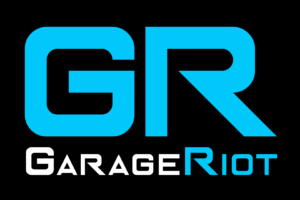 |  |  |  |





